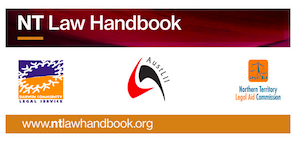-- JonathanMo - 14 Sep 2015
In the case of literary or artistic works (see What sort of subject matter is protected?, below) the work must be in a 'material form' for copyright to subsist in it [CA s.22(1)].Thus copyright in a literary work comes into existence when the work is first reduced to writing. A speech, as such, cannot be protected unless it is delivered from a written text. Subject matter other than literary and artistic works is not subject to the 'material form' requirement [CA ss.85-88). 'Material form' includes any form (whether visible or not) of storage from which the work or adaptation, or a substantial part of the work or adaptation, can be reproduced [CA s.10(1)].
When Does Copyright Apply?
There are three basic principles or 'characteristics' that need to be grasped in respect of copyright and what it means, namely:Tangible v Intangible
The copyright in a work is distinct and separate from the rights of property in an object containing that copyright. For example, a library may own a book (because it purchased it), but the author still owns the copyright over the story in the book. See Pacific Film Laboratories v Federal Commissioner of Taxation [1970] HCA 36; (1970) 121 CLR 154, in which Barwick CJ stated that there 'is authority for the proposition that the property in a chattel may be in one person and the copyright in another'.
Idea v Expression
Copyright protects only the form in which the ideas and information are expressed. It does not protect ideas or pieces of information themselves. Rather, it protects the form or manner in which an idea is expressed, which doesn't need to be novel: a dichotomy which is said to be 'probably the most difficult concept in the law of copyright' and to be 'often honoured more in the breach than in the observance'.
See Zeccola v Universal City Studios [1982] FCA 241; (1982) 67 FLR 225; 46 ALR 189 (The 'Jaws' case), or for a more recent decision, see Thomas v Brown [1997] FCA 215; (1997) 37 IPR 207 (the Aboriginal flag case). And an even more recent case: Baigent v The Random House Group Ltd [2006] EWHC 719 (the Da Vinci Code case).
Derivation v Independent creation
Copyright confers a right against derivation, as opposed to a right of independent creation. To establish that an infringement exists, it is essential to show the infringing work was copied or derived from someone else's work. There is no protection against the coincidental, independent creation of essentially the same work or subject matter by another author. Where two precisely similar works are produced wholly independently, the author of the first-published work has no right to restrain the publication of the second.
The crucial factor here is that the work must be original, irrespective of artistic or literary merit. The work must also show some mental effort or creativity. Hence the information that a list of business names and addresses represents may not be protectable, but the creativity that is added by compiling them into a business directory would give the directory copyright protection.
See Bright Tunes Music Corp v Harrisongs Music 420 F Supp 177 (SDNY 1976) (George Harrison's My Sweet Lord case).
In the case of literary or artistic works (see What sort of subject matter is protected?, below) the work must be in a 'material form' for copyright to subsist in it [CA s.22(1)].Thus copyright in a literary work comes into existence when the work is first reduced to writing. A speech, as such, cannot be protected unless it is delivered from a written text. Subject matter other than literary and artistic works is not subject to the 'material form' requirement [CA ss.85-88). 'Material form' includes any form (whether visible or not) of storage from which the work or adaptation, or a substantial part of the work or adaptation, can be reproduced [CA s.10(1)].
 Copyright © by the contributing authors. All material on this collaboration platform is the property of the contributing authors.
Copyright © by the contributing authors. All material on this collaboration platform is the property of the contributing authors. Ideas, requests, problems regarding AustLII Communities? Send feedback
This website is using cookies. More info.
That's Fine

